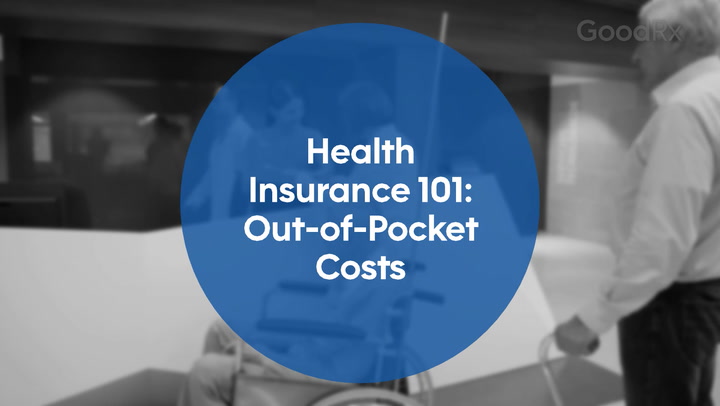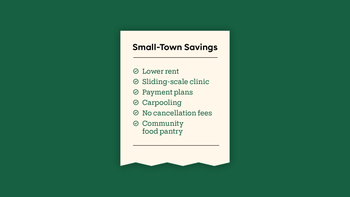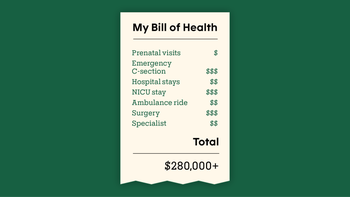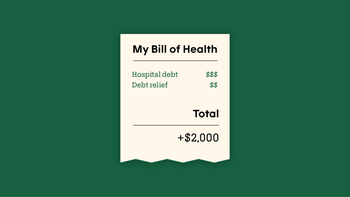Should You Make a 401(k) Withdrawal to Pay Medical Bills?
Key takeaways:
If you have no other means to pay medical bills, a hardship withdrawal from a qualified retirement plan like a 401(k) can be a last resort.
You’ll have to pay income tax on the withdrawn amount. There’s also a 10% early withdrawal penalty, but retirement plan sponsors usually waive that if you meet the medical hardship qualifications.
You apply for the withdrawal through your retirement plan’s administrator, not the IRS directly.

If you have medical bills piling up and no way to pay them, you may be thinking about tapping into your retirement fund as a last resort.
You probably know that you’ll have to jump through some hoops to get money out of a tax-advantaged retirement account. For qualified retirement plans — such as 401(k), 403(b), or 457 plans — the rules say you have to be 59½ years old to cash out without penalty. (You’d still owe income tax on any withdrawals.) Before that age, in addition to income tax on the withdrawn funds, you’d pay a 10% early withdrawal penalty.
You may be able to avoid the penalty, though, if you’re using the money to pay healthcare bills. Retirement plans usually waive the penalty under certain circumstances, including medical hardship.
Prescription Savings Are Just the Beginning
See what other benefits you qualify for—from cashback cards to cheaper insurance.

By continuing, you agree to the GoodRx Terms of Use, Privacy Policy, and Consumer Health Data Privacy Notice. You also agree to share your personal information with GoodRx partners to provide you with relevant offers.
What is a medical hardship?
According to the Internal Revenue Service, medical hardship is an inability to pay for what’s considered an “immediate and heavy financial need.” The hardship refers to the costs you’ve incurred, not a health condition.
With a medical hardship designation, you can withdraw money from a qualified retirement plan at any age without penalty. But you can only withdraw the amount you need to pay your hardship bills.
These are medical hardship circumstances, according to the IRS:
Medical care expenses for you, your spouse, dependents, or beneficiary (The IRS specifies that these may only be unreimbursed medical expenses that are not covered by health insurance)
Funeral expenses for you, your spouse, children, dependents, or beneficiary
Other hardship situations include needing money for:
Costs directly related to buying a home (other than mortgage payments)
College tuition, educational fees, and room-and-board expenses for the next 12 months for you or a family member
Payments to prevent eviction or foreclosure on your home
Certain repairs to your home
How do you apply for a hardship withdrawal from your 401(k)?
You start with an application to your plan administrator. That may be your employer’s human resources department, but it’s more likely to be a third-party custodian. For instance, your plan may be administered by a major brokerage firm like Fidelity or Vanguard. Every plan’s process will be a little different.
You’ll need to do some additional paperwork, too. For medical hardship withdrawals, you may be asked to submit documentation or perhaps a letter of explanation. In that case, you may have to lay out cash for your bills first, and then submit the actual receipts.
The plan administrator is likely to follow up with you. That’s because both the plan administrator and the IRS need to be convinced that you have a true hardship and that a withdrawal is your best means of getting the money you require. However, you can self-certify your need and decide for yourself whether a loan or a withdrawal is right for you.
How do you write a hardship letter?
To communicate your hardship effectively, be prepared to write a letter or statement outlining your situation. It will go along with your receipts.
You want to be clear and concise in stating your needs. Make sure to include all the pertinent identifying information, such as:
The plan participant's name
The total cost you’re facing
The amount you’d like to withdraw
The other ways you tried to meet your expenses
The IRS says to include the following specific information for medical purposes:
Who incurred the medical expenses?
What is the relationship to the plan participant (self, spouse, dependent, or primary beneficiary)?
What was the purpose of the medical care (e.g., diagnosis, treatment, prevention, or long-term care)?
What is the name and address of the service provider?
What amount of medical expenses was not covered by insurance?
Remember, you’re asking for your own money, so there’s no shame or judgment involved. You’ll do best if you leave out emotion and stick to the facts.
The IRS and the retirement plan won’t harass you about the 10% penalty you’re trying to avoid. They just want to preserve these safeguards and make sure people hold on to their saved money to have it in retirement.
Are there penalties for making a hardship withdrawal from your 401(k)?
No. Actually, it’s the reverse. The hardship designation lets people younger than 59½ avoid the 10% penalty for early retirement plan withdrawals. If you are older than that, you can access any amount of funds you need at any time. But, be aware: You can’t put withdrawn funds back into the account unless you do it within 60 days.
A tax-advantaged plan like a 401(k) is funded with pretax contributions. Taxes on its gains are tax-deferred. So, any money you take out of it is subject to income tax, regardless of your age. You will add that to your income on your 1040 tax form and pay taxes in the appropriate bracket.
The real penalty is in the lost growth opportunity of your retirement savings. Taking $10,000 out of retirement savings prevents that money from growing tax-free within the account. A study in Business Economics reported that, with an 8.5% annual rate of return over 30 years, a $10,000 withdrawal could cost you $115,583 in lost earnings.
What happens if your hardship letter is rejected?
If your hardship request is denied, you can appeal. If all else fails, you can withdraw the funds and pay the 10% penalty along with the income tax.
There are also alternatives to hardship withdrawals, including:
401(k) loans: Many 401(k) plans let you take out a loan. You’re essentially borrowing your own money and paying yourself back with interest. (There may be some service fees, too.) The IRS restricts the loan amount to 50% of your vested account balance or $50,000 — whichever is less. Generally, you have up to 5 years to pay it back.
A 401(k) loan may not work for you if you doubt you’ll be able to pay back the funds within 5 years. Also, it’s not the best option if your job isn’t secure. If you were to leave the company, you’d have to repay the loan balance all at once.
Balance transfer credit cards: You may be able to qualify for a new credit card with a promotional 0% interest rate and a high credit limit. If so, that may buy you some time to pay the medical debt without interest. But you would want to make sure you can pay off the credit card balance during the special intro period, which is typically 12 to 18 months, Otherwise you’ll be stuck with a high interest rate — possibly 25% or more.
Personal loans: Taking out a personal loan or home equity loan could help you avoid dipping into your retirement funds. If you’re in financial hardship, though, it may be difficult to get approved.
Can medical bills be forgiven?
Yes. Sometimes you can get your bills reduced or forgiven by the medical provider or hospital. You may be able to negotiate for a lower bill or work out a payment plan.
In some cases, you can apply to have your debt fully forgiven. Your chance of success will depend on your overall financial situation, how much money you owe, and the healthcare provider’s rules.
As of July 1, 2022, credit bureaus will wait a year before adding unpaid medical debt to your credit report — but remember that providers will still try to collect it.
The bottom line
To pay medical expenses you can’t afford, you may be thinking about a hardship withdrawal from your 401(k) or similar qualified retirement plan. If you fulfill all the hardship requirements, you would be able to avoid early withdrawal penalties, but you’d still owe tax on the money you take out. Consider other alternatives first, especially those that don’t drain your retirement savings.
Why trust our experts?


References
Bernstein, D. (2021). Pre-retirement use of 401(k) funds. Business Economics.
Internal Revenue Service. (2021). 1040 and 1040-SR tax and income credit tables.
Internal Revenue Service. (2021). Cash or deferred arrangements.
Internal Revenue Service. (2022). Retirement topics - Hardship distributions.
Internal Revenue Service. (2022). Retirement topics - Plan loans.
Internal Revenue Service. (2022). Rollovers of retirement plan and IRA distributions.
This article is solely for informational purposes. This article is not professional advice concerning insurance, financial, accounting, tax, or legal matters. All content herein is provided “as is” without any representations or warranties, express or implied. Always consult an appropriate professional when you have specific questions about any insurance, financial, or legal matter.
























